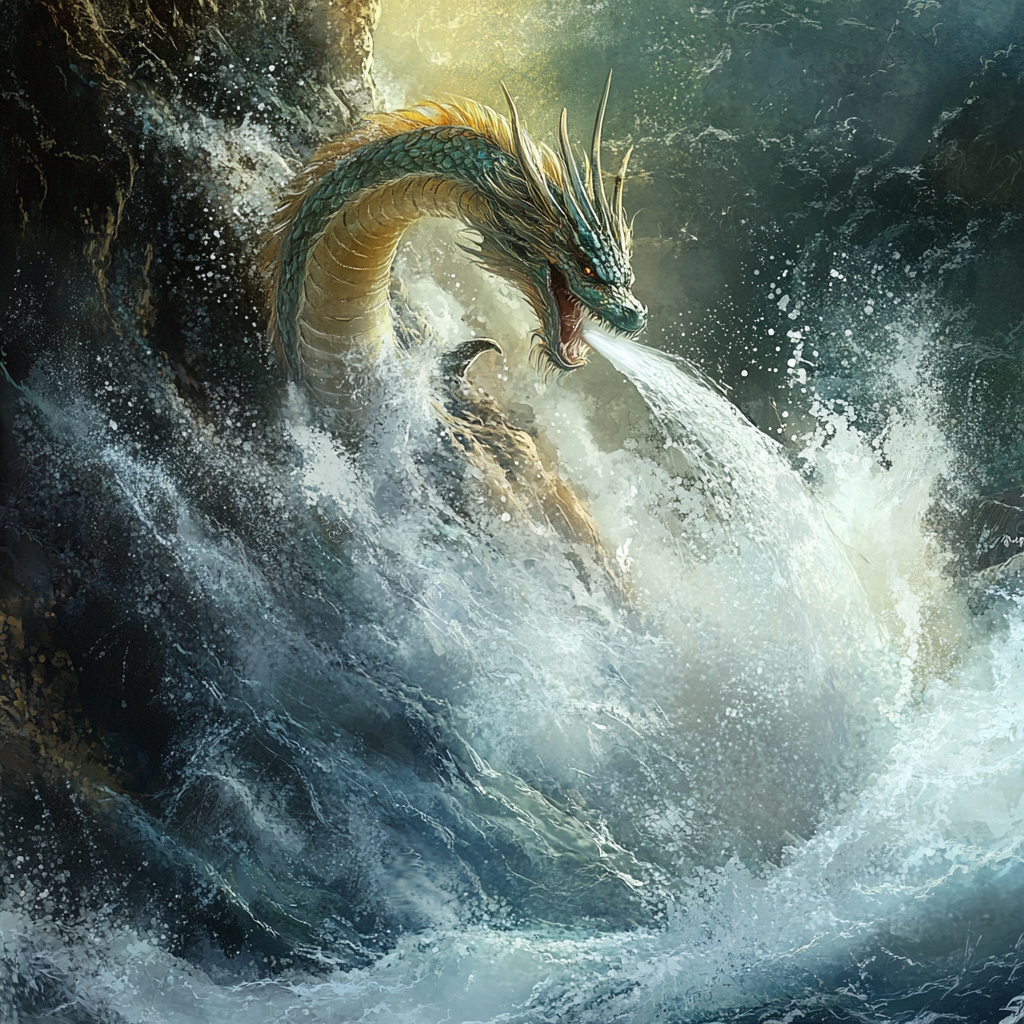
Water Dragon Name Generator
Name: Mizuryu
Meaning Origin Description Water Dragon Japanese Ancient water deity of the eastern seasName: Hydros
Meaning Origin Description Water Serpent Greek Mythical water snake with healing powersName: Suijin
Meaning Origin Description Water God Japanese Divine protector of fishermen and sailorsName: Leviathan
Meaning Origin Description Twisted Serpent Hebrew Massive sea creature of biblical legendName: Nixie
Meaning Origin Description Water Spirit Germanic Shapeshifting water being with mesmerizing powersWater Dragon Details
| Habitat | Deep oceans and underwater kingdoms |
| Breath weapon | Pressurized water |
| Usual alignment | Neutral |
The Water Dragon (Draconus aquaticus) exhibits remarkable adaptations for aquatic environments, with streamlined morphology and specialized respiratory features allowing for extended underwater periods. Adults typically reach lengths of 40-60 feet, with females slightly larger than males. Their bodies display iridescent scales in varying shades of blue, green, and silver, providing excellent camouflage in marine settings.
Notable physiological characteristics include:
- Retractable gills supplementing lung function
- Webbed appendages with retractable claws
- Hydrophobic scale coating
- Powerful tail adapted for propulsion
- Enhanced underwater vision
- Internal ballast system for depth control
Water Dragons primarily inhabit coastal regions, deep lakes, and river systems, establishing territories spanning several square miles. They construct elaborate underwater lairs in caves or reef formations, often incorporating multiple escape routes and air pockets.
Their diet consists predominantly of large aquatic prey, including whales, sharks, and shoaling fish. They demonstrate sophisticated hunting strategies, using their ability to generate localized currents and create whirlpools to disorient prey.
Social behavior tends toward solitary existence, with pairs coming together only for mating seasons. They display remarkable intelligence and problem-solving abilities, particularly in navigating complex underwater terrain and tracking prey movements.
Temperamentally, Water Dragons exhibit calculated and patient behavior patterns. They typically maintain neutral to chaotic neutral alignments, showing little interest in terrestrial affairs unless their territory is threatened. They often develop symbiotic relationships with smaller marine species and may tolerate respectful human interaction, particularly with seafaring communities that honor traditional boundaries.
Breeding occurs every 7-10 years, with clutches of 2-4 eggs incubated in specialized underwater chambers maintained at precise temperatures through geological thermal vents or magical regulation.
Principal vulnerabilities include:
- Dependency on clean water systems
- Susceptibility to extreme temperature changes
- Territorial conflicts with other aquatic apex predators
- Vulnerability during molting periods
The species demonstrates increasing adaptation to human expansion, though habitat encroachment remains a significant concern for population stability.